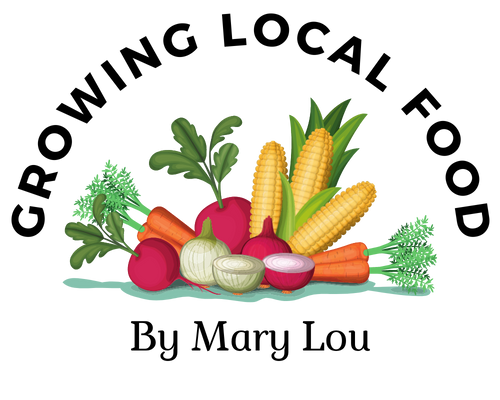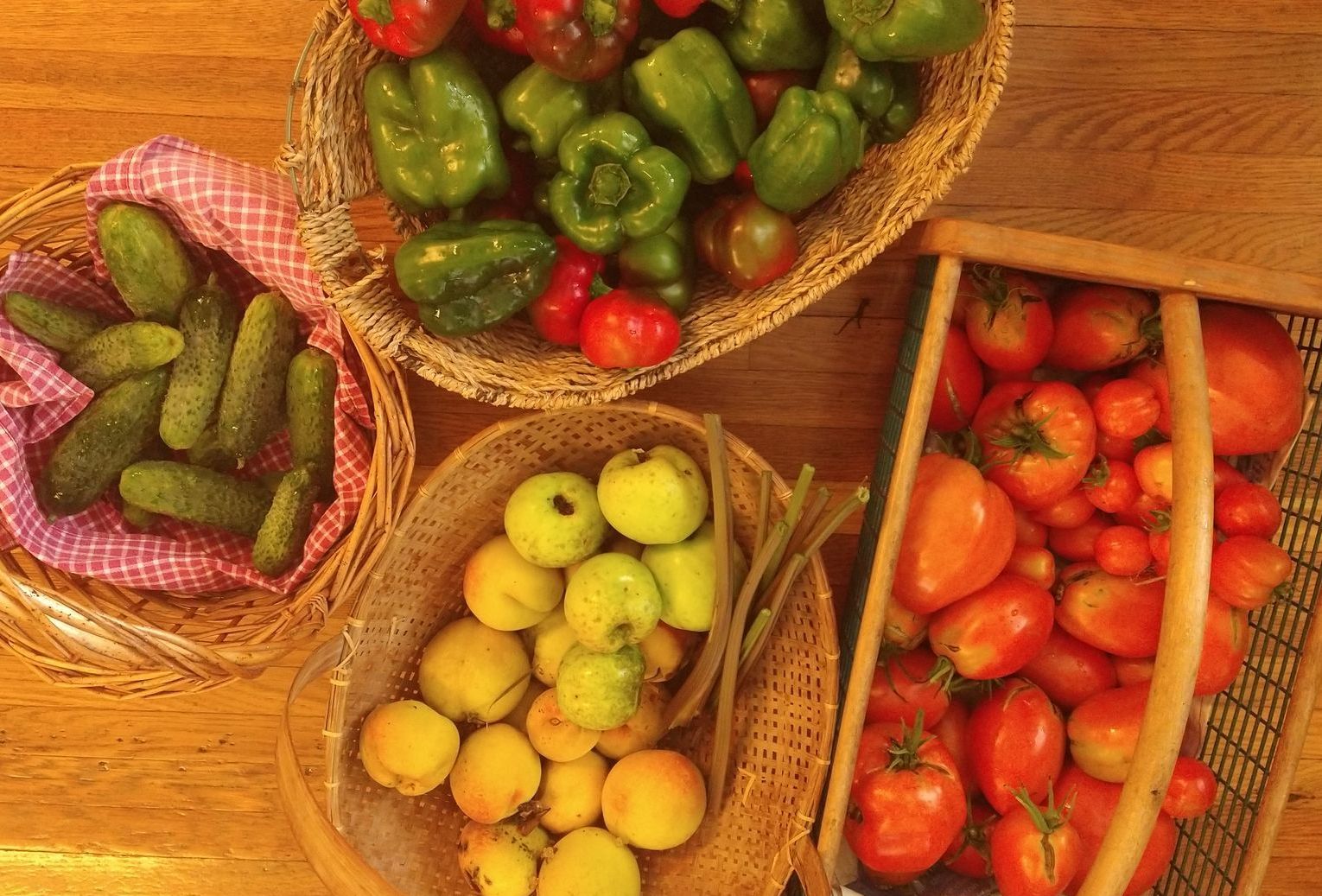Beginners Guide to Growing and Using Herbs
The many pleasures of growing and using herbs:
People have always depended on the many benefits that herbs offer. Decades ago, and in some parts of the world today, herbs serve as disinfectants, medicine or are used for food-preservation. We may think of them mainly as spices to enhance the flavor of food, and that may be reason enough to grow them. When you grow herbs, however, your enjoyment will be enhanced when you discover their beauty and fragrance. Next you might discover their benefit as a "companion plant," as they help to keep the "bad bugs" away from your precious garden plants. You might then enjoy creating a pollinator-friendly space where herbs serve as shelter, food, and even as host plants for butterfly eggs and off-spring.
We can't expect to grow everything we need the first year we garden. However, year by year we can add a few more herbs that we enjoy using. For example, we can sneak a few basil plants in by the tomato plants one year and then add a perennial sage plant by the house the following year. Most herbs can be started from seed, so they make an economical and pleasurable addition to our gardens.
Enjoy the pesto recipe below. It's easy to make and has spiced up many a meal at our house year-round.
Finding room for herbs:
Indoor growing space:
Herbs come in so many sizes and uses, that everyone can treat themselves to one herb or another. No outside space to grow plants? If you have a window that has direct sunlight five to six hours of the day, your herbs will thrive. Choose low-growing plants (so they don’t take over your home!) that you can use in cooking. Possibilities include thyme, marjoram, savory, parsley, sage, basil or chives. You can grow them from seed in small, well-drained pots and nurture them with water, dilute seaweed emulsion and sunshine. Pinching off the ends of branches (which you can put in the dinner meal) will help your plants stay bushy and provide you with fresh herbs for cooking.
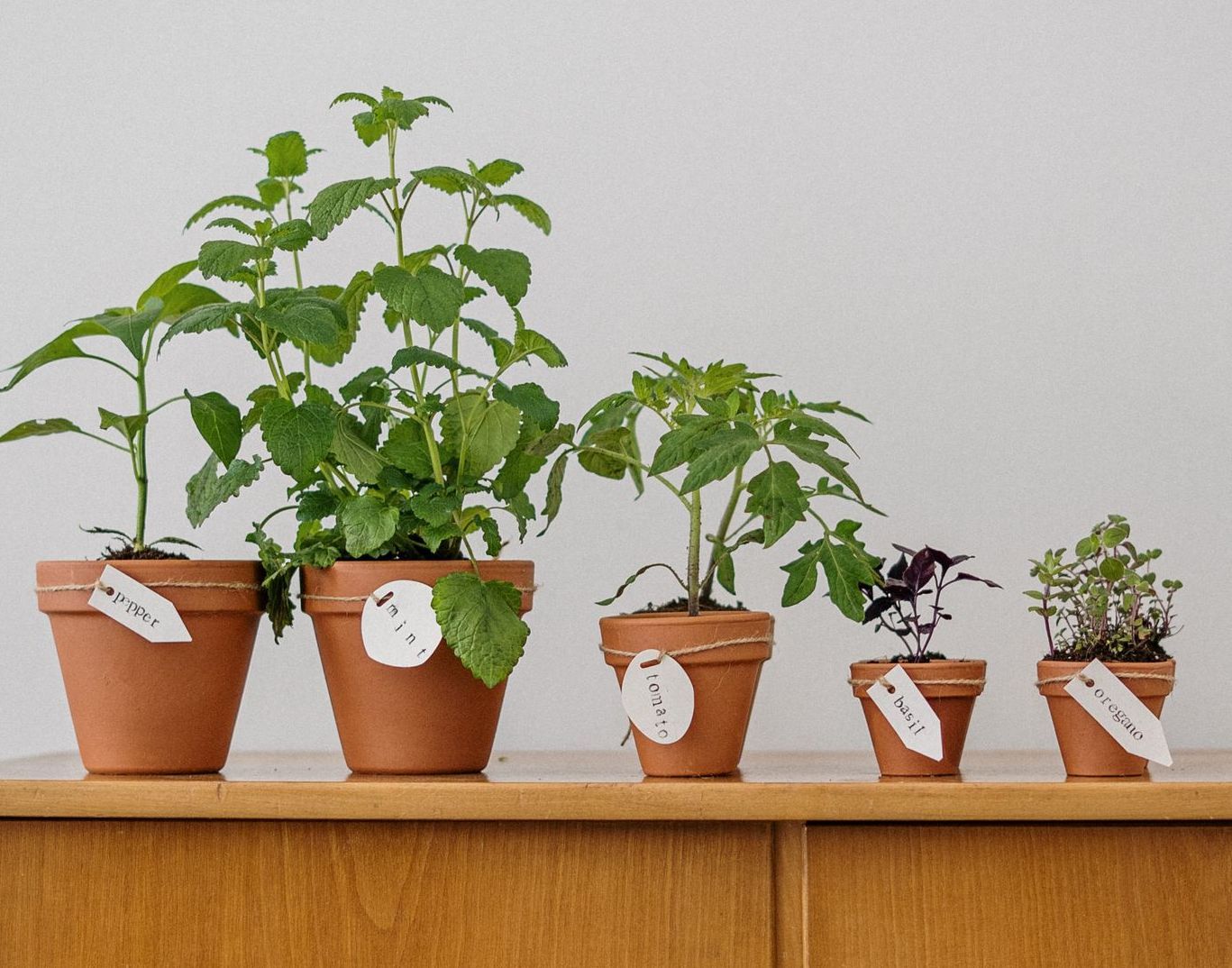
Outdoor containers:
If you have some outside space, many herbs grow well in containers. The closer the herbs are to your kitchen, the more likely you are to use them, so keep that in mind when looking for a sunny place to grow herbs. Herbs benefit from having crowded roots thinned out, so if you know a neighbor with herbs, you might ask for some root divisions. Herbs that can be shared by division include chives, mints, oregano, rosemary, sage, tarragon and thyme.
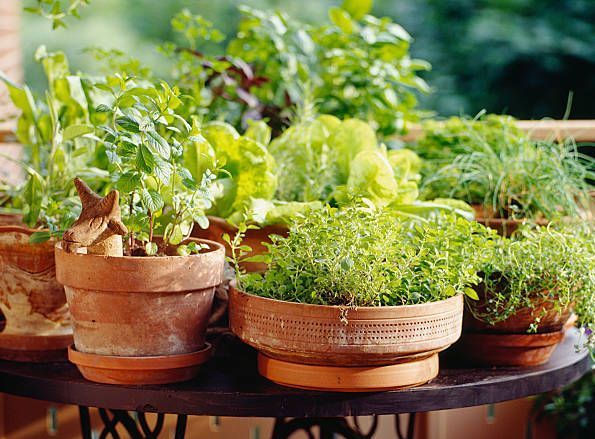
Beautiful borders:
It’s fun to see photos of formal herb gardens, but even when done less formally, herbs make excellent landscape plants. Imagine your walkway lined with rosemary whose scent you can enjoy as you take a walk. Sage, thyme and chives also make good borders while rosemary or lavender can stand taller by a fence or wide walkway. All these that I just mentioned are perennials, and that makes your work a long term investment. Additionally, when pruning along walkways, you can use the clippings to flavor your meals!
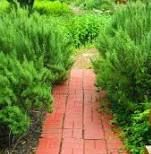
Annual herbs:
Although annual herbs die when the winter's cold arrives, many are so versatile and delicious that they're worth planting annually. One advantage of doing so is that you can rotate the herbs along with your other garden plants not only to avoid disease, but to benefit the plants that they grow alongside. If you would enjoy eating some of them fresh in the wintertime, consider putting them in pots indoors.
Young plants from a nursery or a retail store are relatively expensive and so I choose to begin most plants from seeds. This will be your option with all of the following herbs.
Basil:
Growing:
As with all annual herbs, I begin basil from seed indoors in early spring. I usually buy basil seeds of both "Sweet" and "Genovese" varieties because I like the unique taste, appearance and smell of each. Basil doesn't tolerate below-freezing temperatures, so I baby the seedlings indoors until they'll be safe in the garden. Basil keeps predator insects away from our precious tomato plants, and so I always plant some of the seedlings between and around each young tomato plant. I like others to grow close to the house so I can easily gather some basil leaves for use in the kitchen.
Using:
Basil is used extensively in the kitchen for Italian tomato sauces, with salads, on top of pizza and, of course, pesto. I am so fond of pesto that I've included the recipe here. Basil plants only lasts year-round when kept indoors in containers, but its leaves can also can be stored dried or frozen. And speaking of storing in the freezer, when you make pesto from fresh basil, the pesto can be frozen overnight in ice cube trays and then popped out for the cubes to then be stored in freezer bags. When making "pesto-pasta" in the wintertime, just use one or two pesto cubes per serving. A taste of summer in mid-winter.
Health benefits:
Basil smells and taste wonderful. I often pinch-off some of the early flowers so that a few of the plants will put all of their energy into growing leaves. When pruning back leaves so the plants will bush out, I munch on some of the leaves while still in the garden mostly because I like the taste, but also because basil has a lot of health benefits. The Cleveland Clinic says that basil is high in vitamin K and antioxidants, that it helps to prevent cancers and helps to manage high blood pressure, cholesterol, and blood sugar, as well as helping our memory, mood and anxiety. No wonder I'm in the garden munching basil!
Helping pollinators:
Another reason I enjoy basil is because its flowers attract honey bees and I enjoy doing garden work with happy bees humming around me. Because it's estimated that pollinator numbers have declined by about 60%, having "extra" basil and other plants for the bees and butterflies can easily be justified. I admit that I'm growing herbs for my own pleasure, but it feels good to be helping other creatures at the same time.
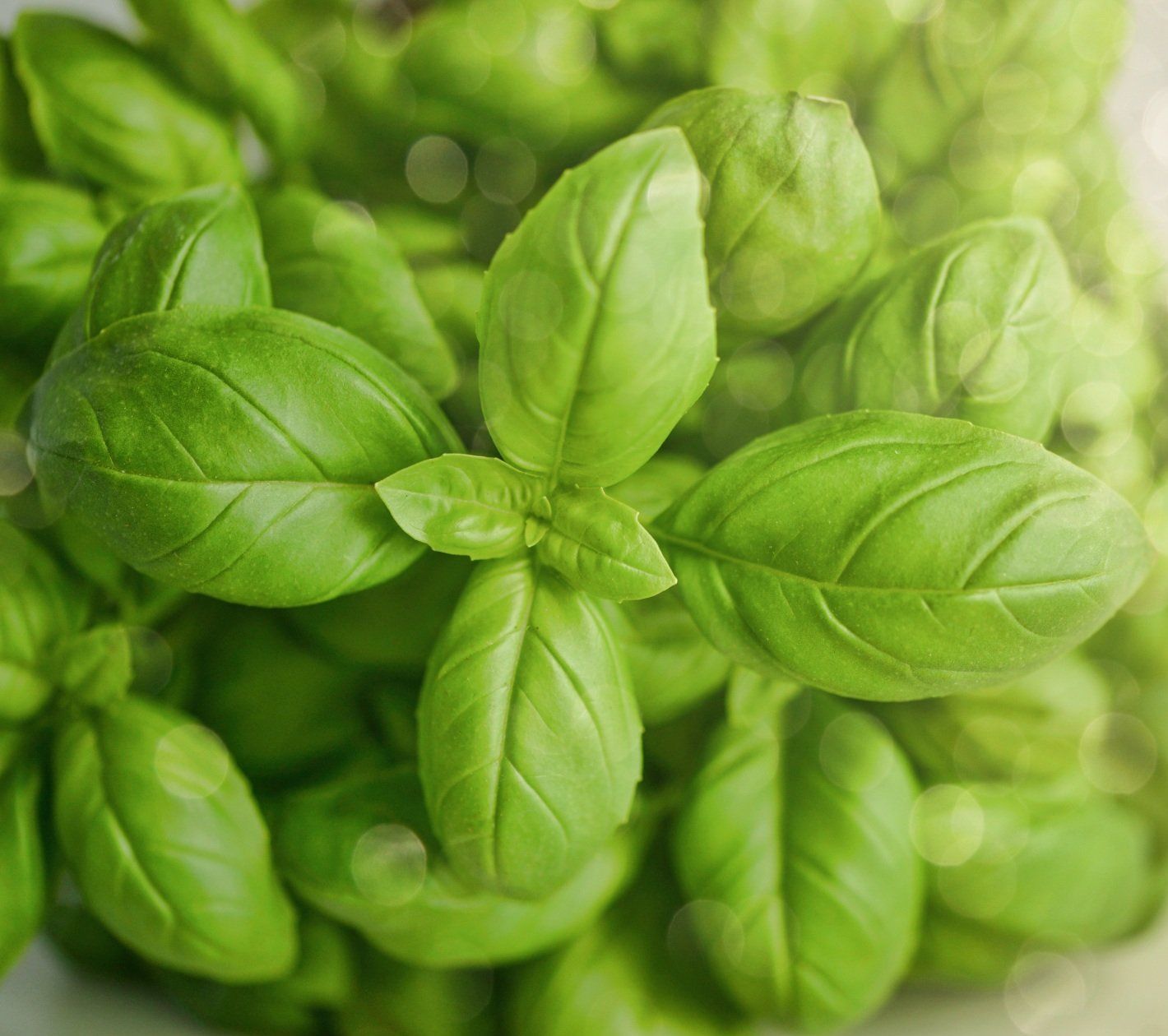
Basil leaves

Frozen pesto cubes
Pesto Recipe:
Ingredients:
Two cups fresh basil leaves
as much parsley as you like
3/4 cup olive oil
1/4 cup walnuts or pine nuts (I use "a handful")
1/2 cup Romano or Parmesan cheese
2 cloves of garlic
salt and pepper
Directions:
Blend all of these ingredients together in a food processor until creamy. To save for winter meals, pour the pesto into ice-cube trays. After frozen, pop the cubes into a freezer bag for storage.
Dill:
Growing:
Dill is an annual plant but it's come back each year in our hoop house by "self-seeding" itself. Of course you can start it annually from seed. The one caveat in growing dill is to distance it from anise. The two are so closely related that it’s easy for them to blend their flavors. That might give the dill pickles that you've canned a licorice flavor!
Using:
If the first thing that comes to your mind with dill is making dill pickles, you're certainly right. I had a large, covered crock in the basement where water, vinegar, dill and garlic sat waiting for cucumbers from the garden. I harvested the cucumbers every two to three days to keep them on the smaller size, washed them carefully and then put them in the crock where they wait until late in the season to be canned.
It's also easy to use dill frequently in the kitchen by sneaking it into cream and cottage cheese, omelets and seafood dishes.
Health benefits:
Herbs seem to have so many health benefits and dill is no exception. It reportedly is loaded with many nutrients that aid gut and bone health, improves diabetic control and reduces stress.
Helping pollinators:
What motivates me to have dill annually in the garden is partially because of its versatility in the kitchen, but I also delight in seeing Swallowtail butterflies use dill to lay their eggs on and for their caterpillars to eat. (They also use celery, parsley and carrots). Being aware of all the miracles going on around me makes gardening much more fun!
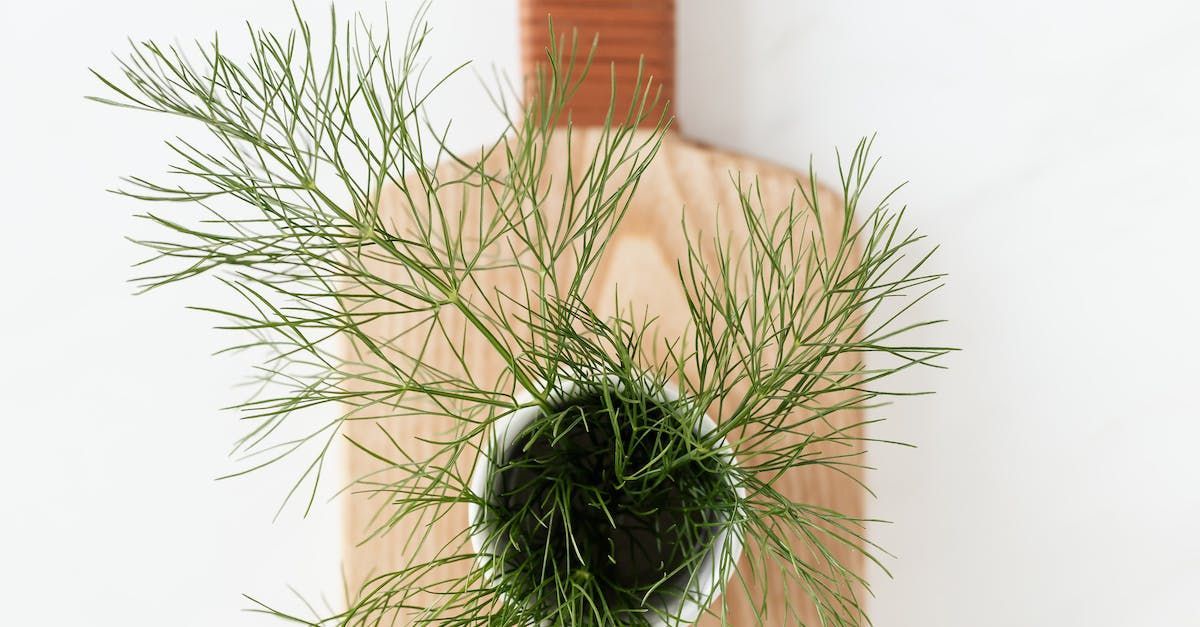
Dill leaves
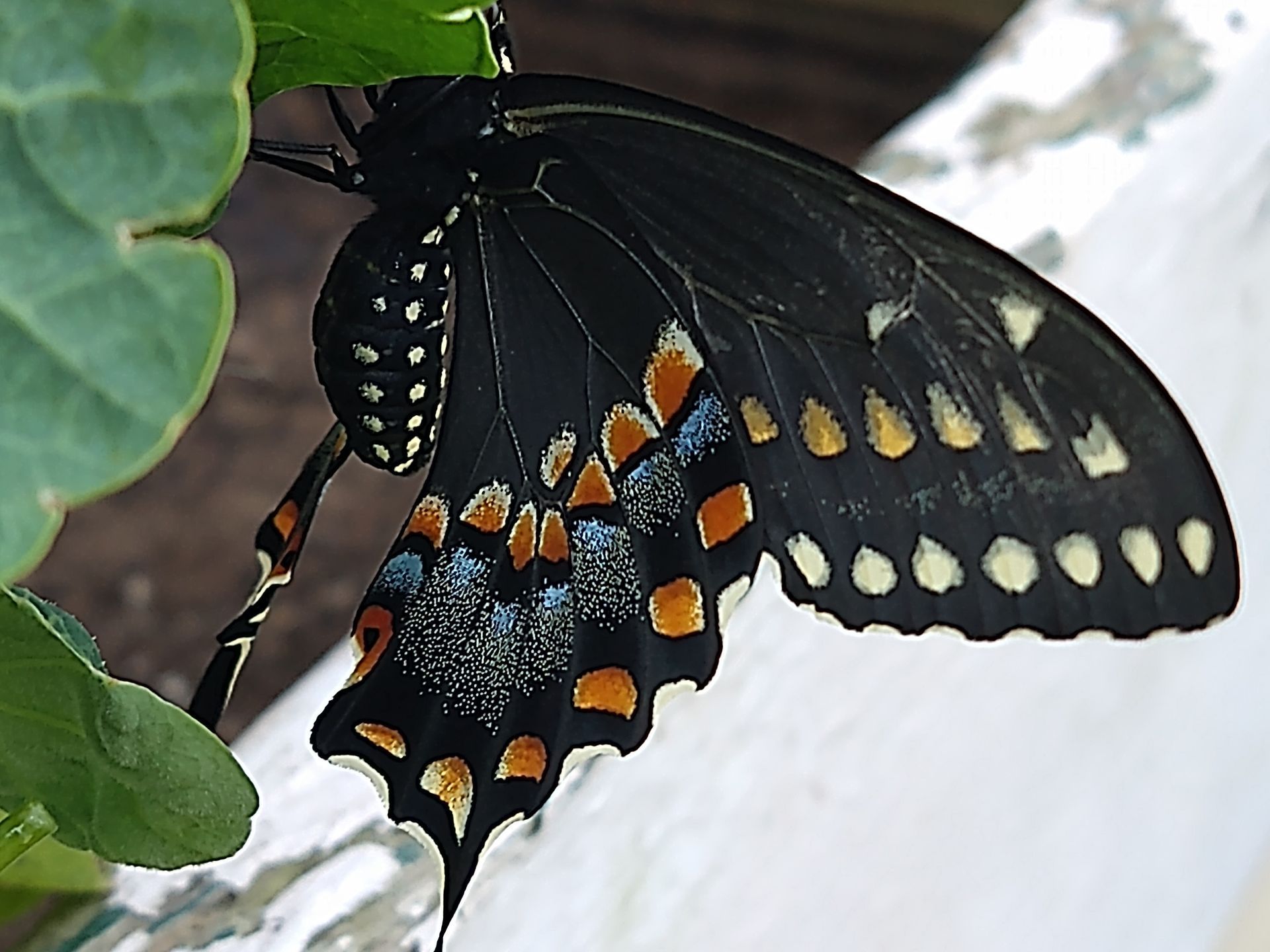
Black swallowtail butterfly
Chamomile:
Growing:
Chamomile may not be familiar to many people except perhaps as a tea. But I enjoy its many benefits throughout the growing season and often sow it directly where I want it to grow after the danger of frost has hopefully passed. It does grow better in cooler temperatures than in the heat of summer, so beginning seeds indoors about six to eight weeks before your frost-free date is a good idea. If you need to give them more space before going outdoors, wait to transplant the seedlings until they have at least two real leaves. You can also wait until after the last frost to direct seed chamomile where you want it to grow. Give the seeds a light covering of straw, compost or vermiculate to help keep them moist.
Chamomile plants can make an attractive border in your garden or along paths. It also does well outdoors in containers.
Using:
The leaves of chamomile are excellent in many Mexican and Indian dishes and often is paired with lime. I don't use the stems. Chamomile leaves don't dry well, and if you have room in your freezer, you can freeze the leaves in ice cube trays, either in water or olive oil, depending on if you intend them for tea, or for example, in salsa. I also appreciate having the flowers for indoor bouquets.
Pollinators:
Bees love chamomile! Although the leaves grow better in the cooler spring and autumn, chamomile flowers best in the heat of summer. It is then that you will see the many types of bees making good use of your bounty.
Health benefits:
Similar to other herbs, camomile is treasured for its many vitamins including potassium and vitamin A. It reportedly helps with blood sugar regulation as well as brain health. Most sources also mention that it helps to decrease anxiety, and perhaps that is why chamomile tea is also popular for aiding sleep.

Chamomile flowers
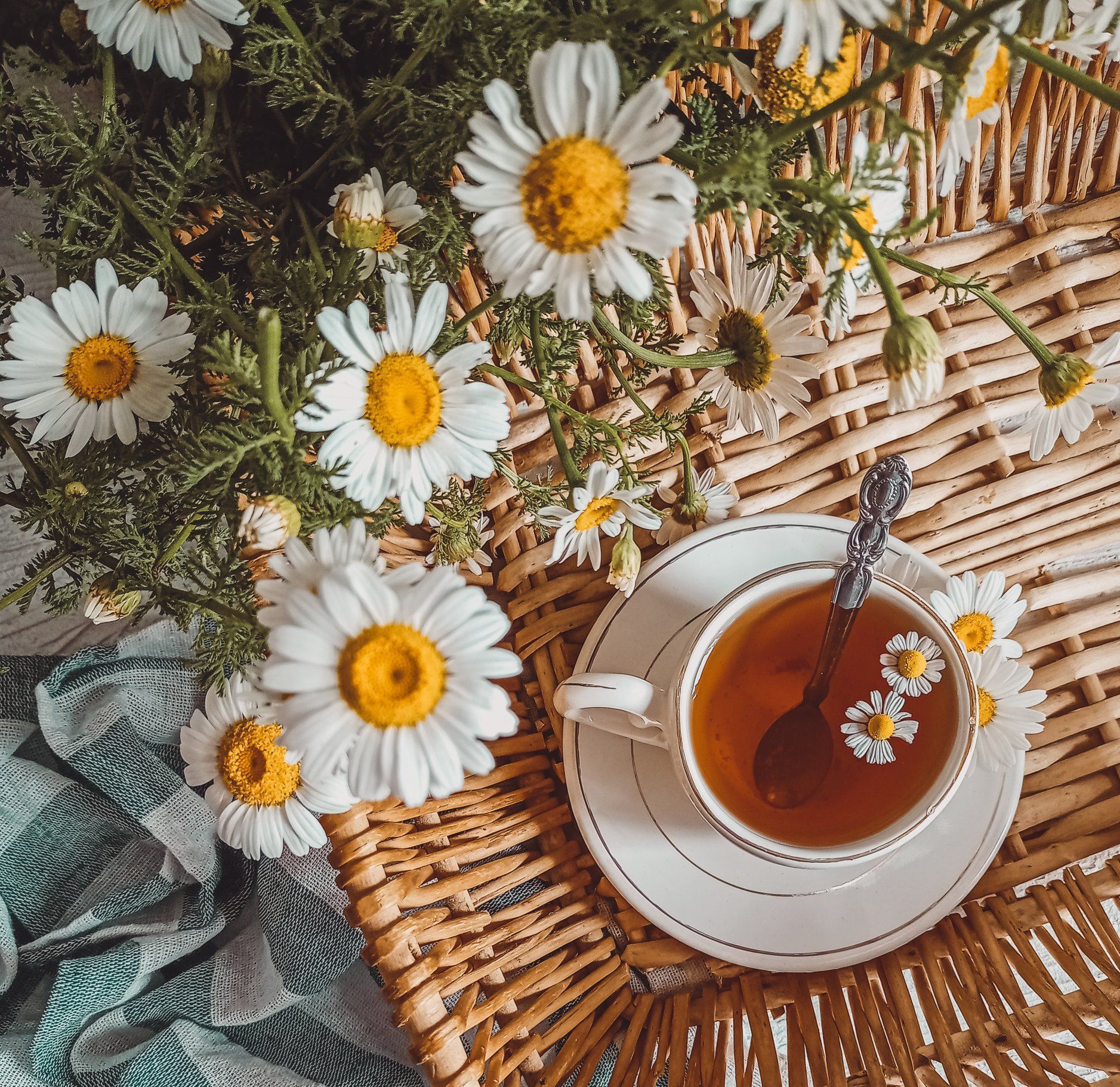
Chamomile tea
Cilantro and coriander:
Growing:
Cilantro grows best without bolting if you plant it directly where you want it to grow. It's better not to fertilize the seedlings but, as with most seeds, you'll get the best results if you keep the soil evenly moist. If you want a continual harvest of cilantro, sow a few more seeds about every three weeks.
Using:
After being picked, cilantro doesn't do well in holding flavor, so harvest what you can use within a few days time. It's best to harvest an entire plant and the leaves are often used in salsas and salads.
You get a wonderful bonus if you let some plants go to seed because these seeds are the coriander spice. When the seeds are ripe they will have turned a yellowish brown on the plant. It's best to snip off several seed heads, band them together and store them upside-down in a paper bag. After the seeds drop to the bottom of the bag, you can sort out any debris and store them in a closed container. Coriander seeds will give any casserole or baked goods a mildly spicy flavor.
Health benefits:
As with other herbs, many
health benefits are attributed to cilantro including the many vitamins and minerals that help with sleep, immunity, heart health and digestion. Traditionally, cilantro and coriander were used for treatment of
colic, neuralgias and arthritis. The coriander seeds retain those health benefits, and are also ground and used as a paste for mouth and skin ulcers.
Helping pollinators:
Cilantro is very attractive to native pollinators as well as our honey bees. It's a double-win when allowing cilantro to flower for pollinators also results in coriander seeds for our kitchen.

Cilantro leaves
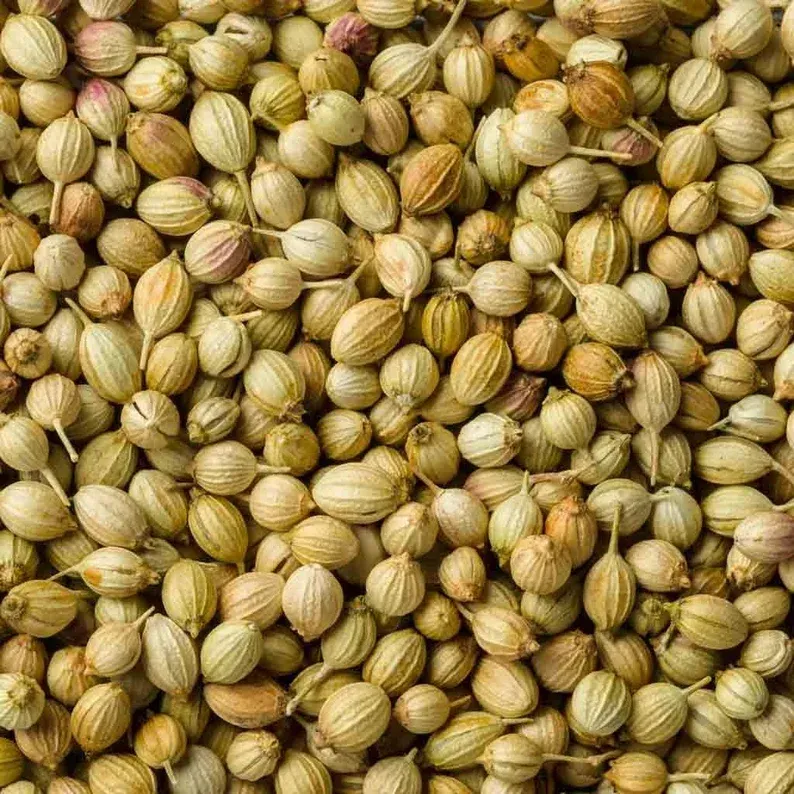
Coriander seeds
Perennial herbs:
Many annual herbs that you've begun one year can become "perennial" just by potting and bringing them indoors for the winter. That's probably only worth your work and space indoors if you will actually use them in the kitchen throughout the winter.
Other herbs like parsley are actually "biannuals," although I've listed it below with the perennials. Parsley is a biannual because it doesn't flower until its second year. If you live where the temperatures get into the single digits or below, even the true perennials will benefit with a cover of straw or leaves during winter's coldest temperatures.
Parsley:
Growing:
Your choice when growing parsley is whether you want to grow the "flat leaf" or "curly leaf" varieties--or both! The curly leaf varieties like "Riccio Verde" are used as a garnish to make your meals more visually appealing. The flat leaf varieties like "Italian flat leaf parsley" are more flavorful than the curly leaf varieties and are used for teas and a variety of recipes.
When growing parsley from seed, be forewarned that it is very slow to sprout in that it may take a seed three to four weeks to emerge. Starting parsley seeds eight to ten weeks before your frost-free date helps, but soaking the seed for 24 hours before planting also speeds up their emergence. After your frost-free date, plant parsley plants outdoors about 8" apart.
Using:
When harvesting parsley, pick the older and outer leaves to use in the kitchen. People use parsley for making tea, but I am more familiar with it in meatballs and poultry stuffing. Many dishes like potato soup will benefit from parsley by improving their appearance, nutrition and flavor.
Health Benefits:
Parsley has been used in teas to treat jaundice, coughs and urinary tract infections. Its nutritional benefits come from vitamin C, carotene, iron and chlorophyll. The latter contains many vitamins and minerals as well as antioxidants.
Helping pollinators:
Have you heard of the "parsley worm"? As with dill, the Swallowtail butterflies appreciate parsley on which to lay their eggs so that their caterpillars can mature by eating the parsley leaves. Swallowtail caterpillars can also thrive on celery, cilantro, parsnips and carrots. My solution is to plant plenty, for both them and us, while cheering them on. Pollinator numbers have decreased sharply since the 1990s and I want them to know they are welcomed in our yard.
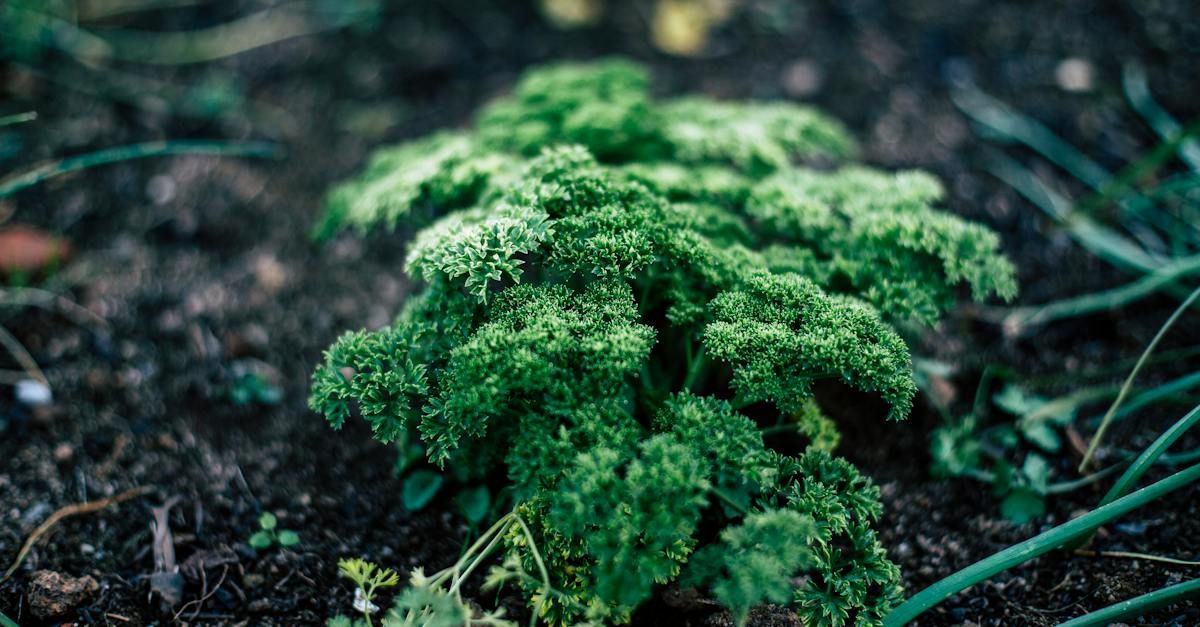
Curly leaf parsley

Flat leaf parsley
Chives:
Growing:
Chives may be the one plant that might be best to begin with the purchase of a live plant because it takes about a year to mature enough to use. However, if I wanted quite a few plants as when bordering a path, I would probably begin from seed.
If you choose to begin chives from seed, plant the seed either on the surface or just barely cover them. Chives thrive in temperatures from 55 to 70 degrees F, so begin your plants outdoors in the spring or fall and thin the seedlings to six to eight inches apart.
Chives are related to onions, garlic, leeks and shallots, and it works well to plant them before or after where these crops have grown. They don't do well with beans or peas, but are good companions for carrots and tomato plants.
Using:
Chives impart a mild onion flavor and are great in early spring salads. When clipped into small pieces, they are attractive and delicious with sour cream, butter and cottage cheese. The flowers are also edible and can be diced fresh as a garnish or as a seasoning. The flowers can be eaten raw, pickled or deep-fried.
Chives belong to the genus Allium and their purplish flowers can also be dried on their stems and used in flower arrangements. I do this routinely to have flowers, even dried ones, indoors in winter.
Health benefits:
Chives are considered "nutrient-dense" because they contain vitamins, minerals and antioxidants.
Pollinators:
You probably already guessed this, but especially bees, and also butterflies, really appreciate chives' flowers for both nectar and pollen.
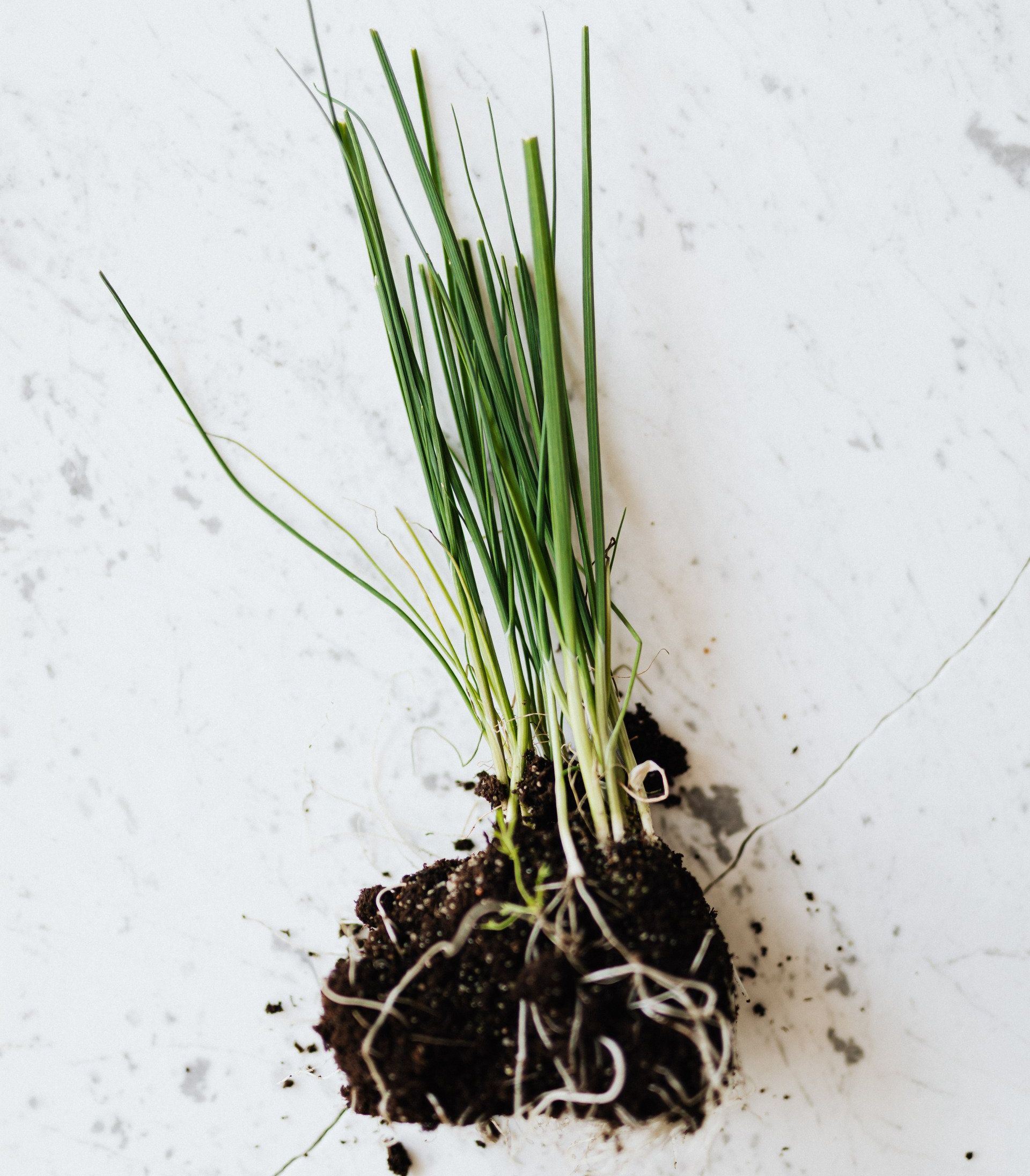
Clump of chive plants
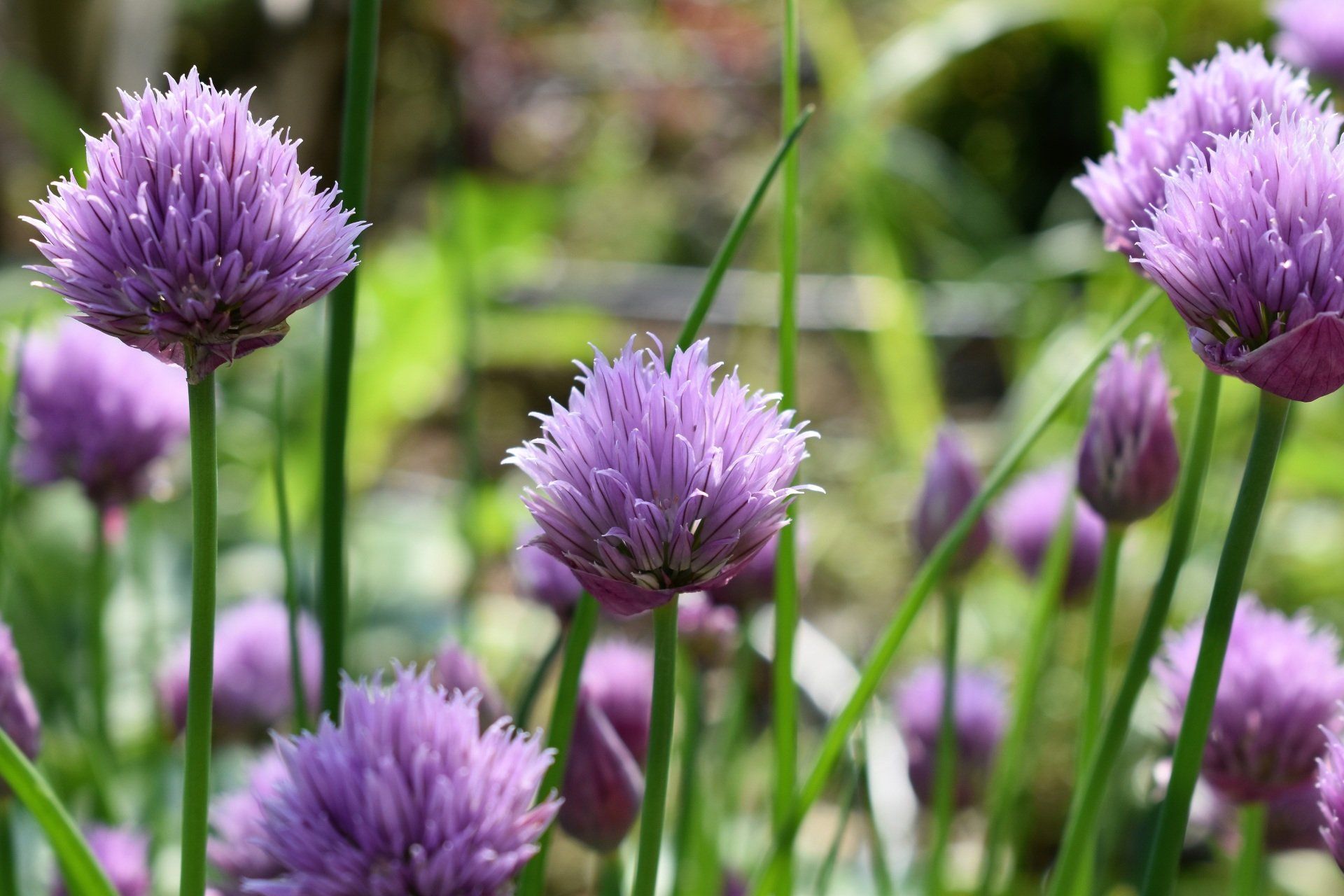
Purplish chive blossoms
Sage:
Growing:
Sage needs two seasons to grow and so is often planted from a division from a friend's plant or purchased young to be transplanted to your garden, herb bed or larger pot. Allow a generous 18" apart when planting. Sage is quite hardy if planted in well-drained, rich soil, in full sun. Consider planting sage with other "Mediterranean spices" like basil, coriander, dill, parsley and thyme. It makes for easy harvesting when making pizza!
Using:
Sage is useful in the garden for repelling harmful pests. In the kitchen, its main use is as a condiment for meat, fish and Mediterranean dishes. Sage tea reportedly has medicinal benefits.
Sage leaves are most "nutritionally dense" when its flowers are just beginning to open, but you can certainly harvest and use them anytime. For winter use, you could bring potted sage indoors, but you can also dry the leaves and store them in airtight, dark colored containers.
Health benefits:
Sage is high in vitamin K, as well as containing the vitamins A,C, and E. It has magnesium, zinc and copper as well as antioxidants.
Sage is an ancient herb whose teas and infusions (leaves and flowers soaked in water) have been used to treat depression, nervous anxiety and liver disorders. Leaves also reportedly kill bacteria and so are used in gargles for laryngitis and as a mouth freshener.
Pollinators:
Sage discourages garden pests, but at the same time attracts
bees, butterflies and hover flies. You may even see an occasional hummingbird on sage.
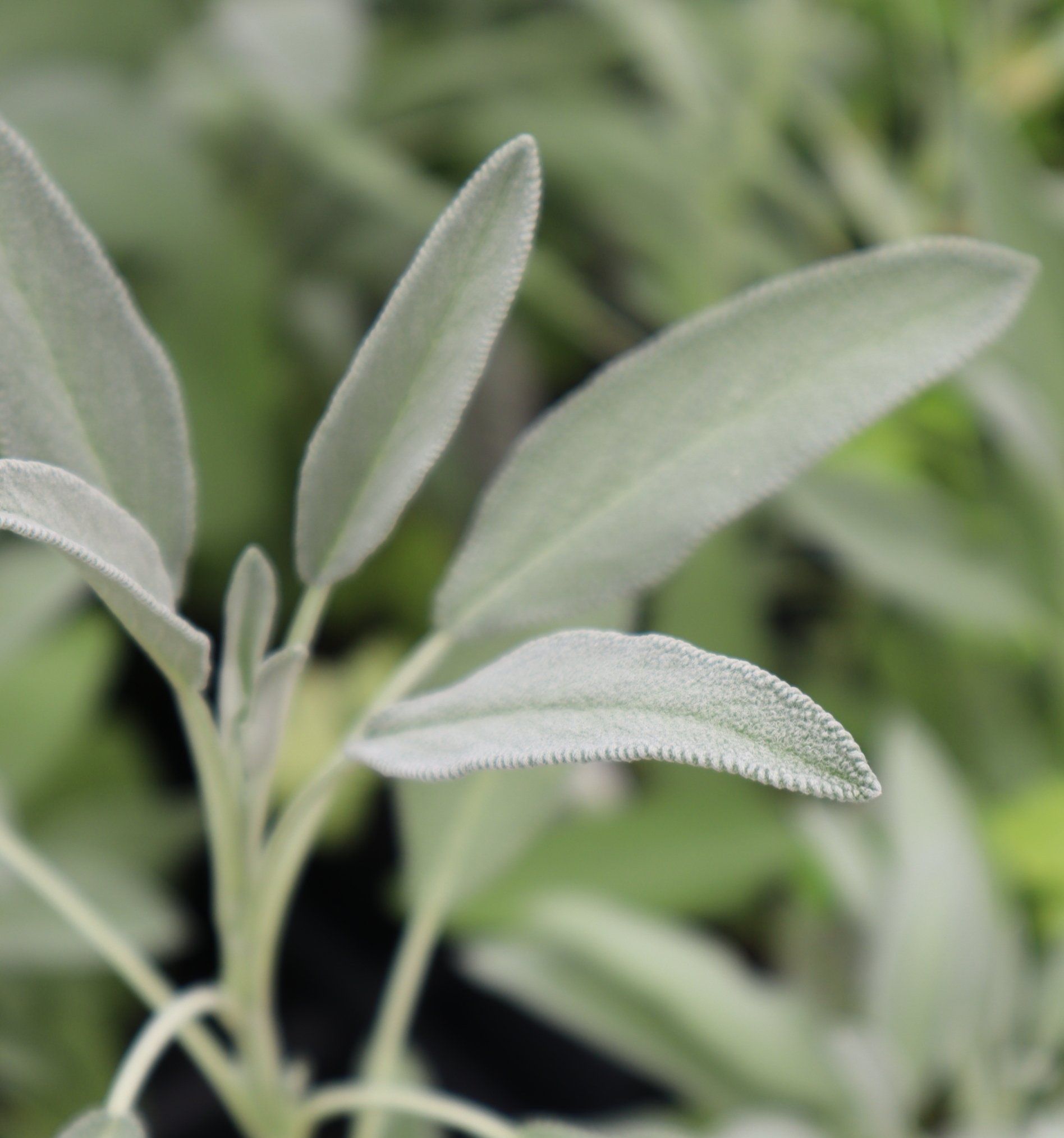
Sage leaves
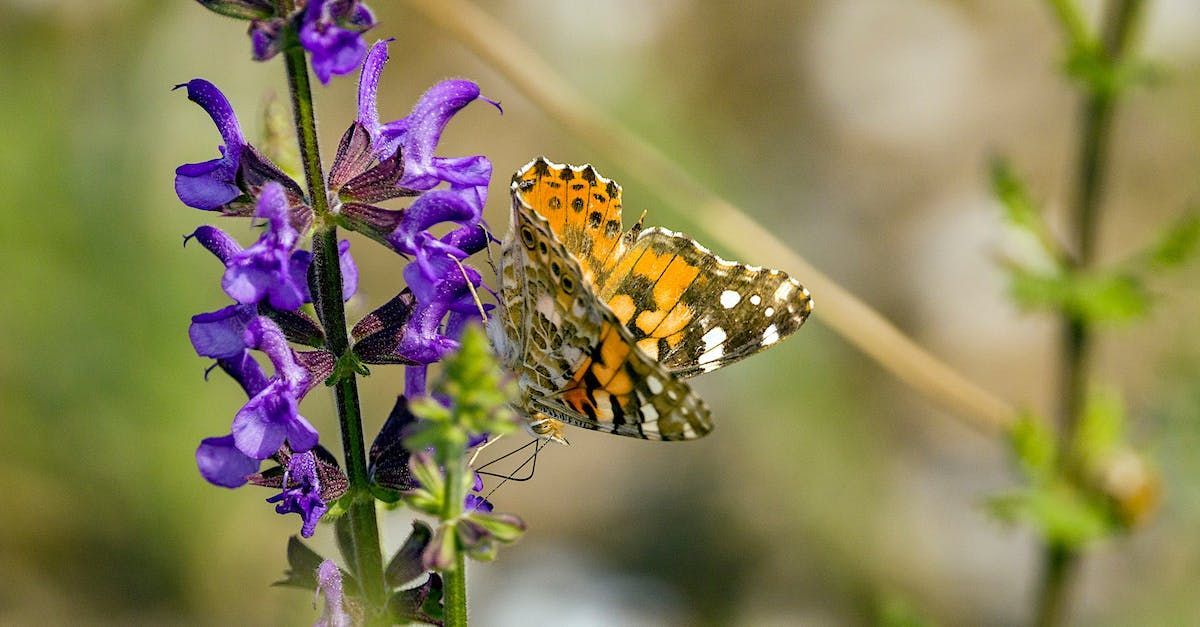
Sage flower with a butterfly
Thyme:
Growing:
Thyme takes two seasons to grow when beginning from seeds. However, if you know a willing person who has thyme plants growing, you can take cuttings in summer, root them in water and then plant them in well drained soil in full sun. You can also start plants in the spring if that person is ready to divide their plant in the spring.
There are several varieties of thyme, but you might want to consider planting "purpura" or "tricolor" because they are both pretty and aromatic. Thyme likes cool to warm temperatures and can tolerate light shade.
Using:
The leaves and flowering tips of thyme are the usable parts. These can be used fresh or sun-dried. The leaves have the best taste and nutritional content when the flowers are just beginning to open, but they can be gathered and used anytime.
Health benefits:
Thyme is high in vitamins A and C as well as many minerals. It is also high in phytonutrients so that this herb is promoted to aid vision and improve cardiac health. It is also said to strengthen the immune system and improve the health of our skin and hair.
Pollinators:
Bees use both the nectar and pollen of thyme and butterflies are also attracted to its nectar.
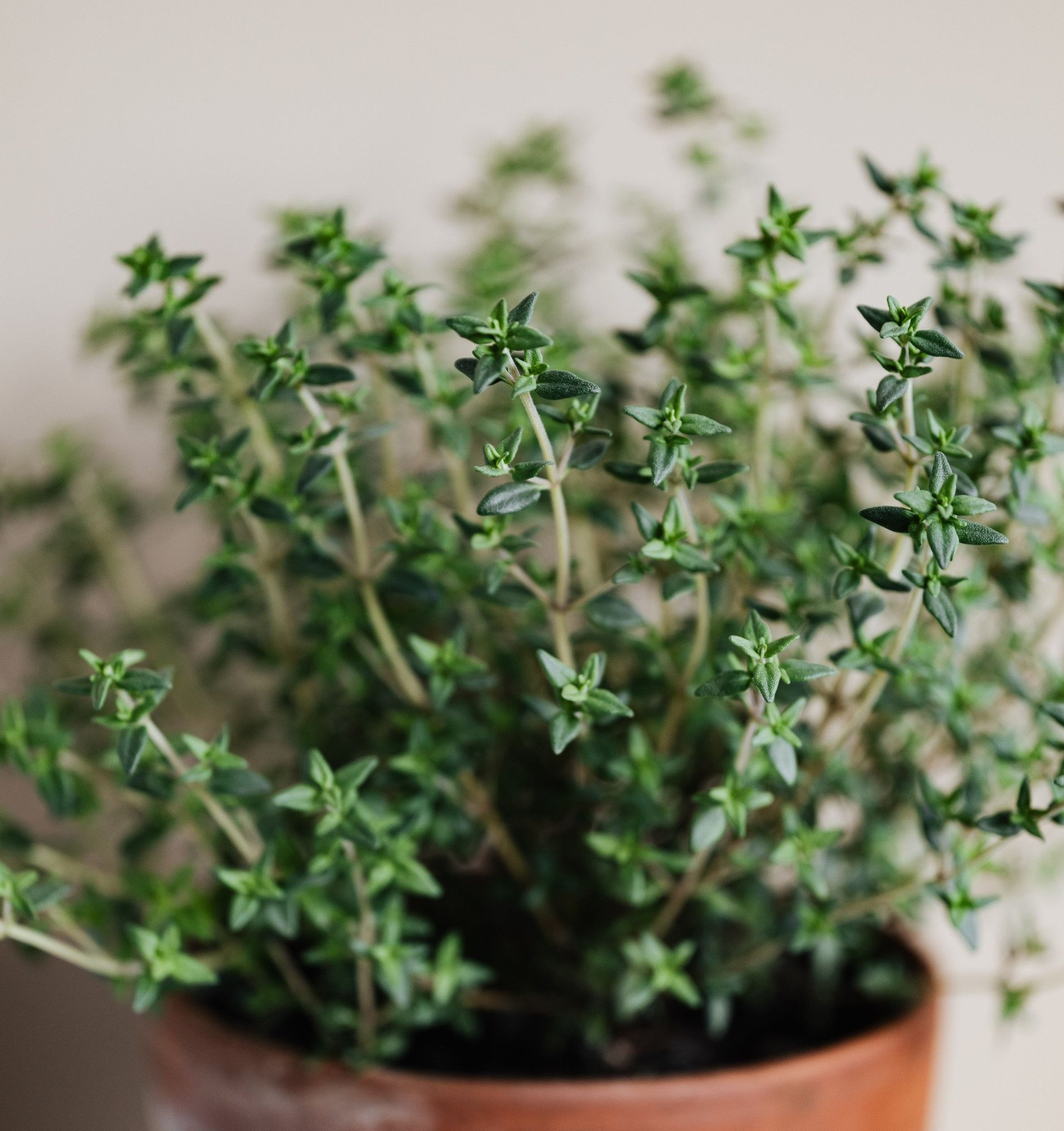
Thyme plant

Thyme plants used as a border
-
When beginning to grow herbs, what are good ones to begin with?
A combination of annuals and perennials works well. Consider beginning with any of the following: thyme, basil, oregano, rosemary, chives, and/or parsley.
-
What herbs make good companion plants in the garden?
Basil helps tomatoes and repels pests throughout the garden. Chives improve the flavor of carrots. Additionally, many common herbs do well growing with vegetables so also consider oregano, parsley, thyme, coriander, and dill.
-
What herbs do well in containers?
Basil, rosemary, thyme, chives, parsley, sage, and dill, among others, do well when grown in containers. All will need sufficient sunlight, water, and pruning.
-
What are the most popular herbs to grow for use in the kitchen?
The most basic herbs to grow for kitchen use are basil, rosemary, thyme, parsley, cilantro, and sage.
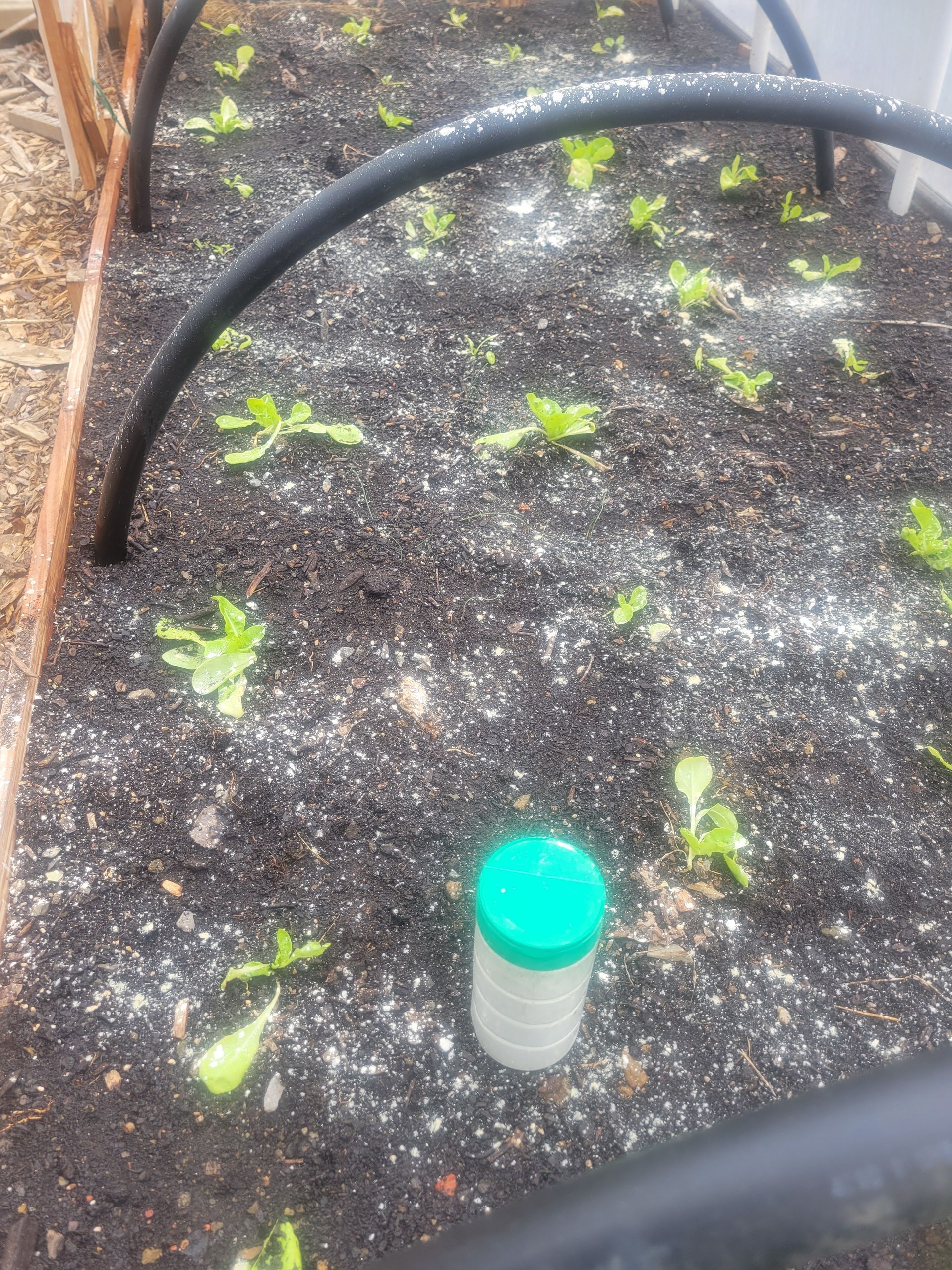
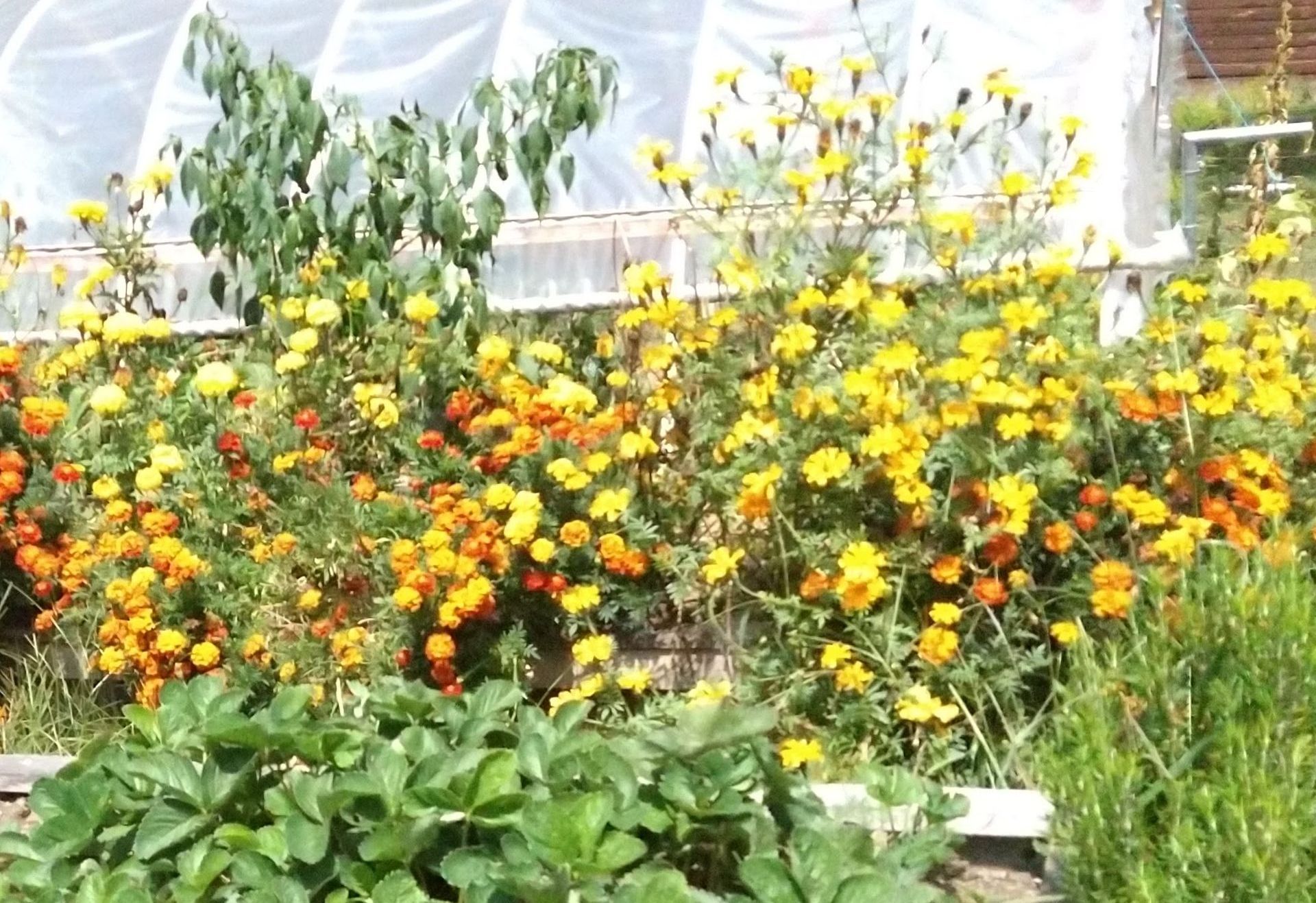
Mary Lou
mlgrowinglocalfood@gmail.com
